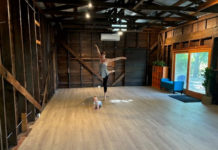What has the city achieved lately in providing more affordable housing and reducing homelessness in our community?
Work continued apace on both fronts throughout the spring and summer. Here’s an update.
Affordable housing
Part of building a successful housing program is orchestrating a symphony of needs and services spanning multiple funding sources and initiatives. Much like in an orchestra, where each instrument plays a key role, addressing the city’s housing needs requires several programs working in concert to provide affordable housing and help end homelessness. Generally, these programmatic areas can be broken into prevention, policy and housing development.
In the prevention section of our housing program, the city has partnered with Burbank Housing to prevent the loss of 39 affordable-housing units by purchasing multifamily apartment units on University Street, Piper Street and Prentice Drive. In this model, the city’s contribution, leveraged with future tax credit financing, provided the funding to not only keep these units affordable, but to provide much-needed repairs to increase the quality of life for the residents and our neighborhoods.
Starting in July, the city began enacting several policy changes, such as updating its inclusionary-housing requirements and in-lieu fees for affordable housing. For example, developers building five or more market-rate homes are now required to allocate 20% of their proposed housing to low- and moderate-income familes. Previously, the requirement was 15%. Please see Section 20.20.030 of the Healdsburg Municipal Code for the full text of the Inclusionary-Housing Ordinance at codepublishing.com/CA/Healdsburg.
The city has also encouraged the development of accessory dwelling units (ADUs) by reducing fees and speeding up the approval processes. In May, the Healdsburg City Council voted unanimously to waive fees to build an ADU (otherwise known as a granny unit) under 850 square feet and reduce the fees by half for ADUs up to 1,200 feet. For more information about the city’s ADU changes and requirements, please read our frequently asked questions or download our brochure: ci.healdsburg.ca.us/853/Accessory-Dwelling-Units—ADUs.
Finally, the city is anticipating even more affordable units in the future with the Mill District development, the North Village project and other development projects that will be required to provide housing affordable to low- to middle-income individuals and families. This includes looking for opportunities in which the city can leverage its assets, such as land it owns, and other resources to ensure the symphony of programs continues to stay in tune to the needs of our community.
Help for the homeless
Reach for Home, the city’s partner in providing services to our homeless neighbors, provides outreach, including a street medicine team, to homeless encampments to refer people to the appropriate services and to help them get housing. Reach for Home currently operates 11 units of supportive housing in the city and plans to expand that number to 29 in the next two years.
In addition, the city and Reach for Home successfully applied for and will use nearly $1.6 million in State Homelessness Emergency Aid Program (HEAP) funding to build a homelessness navigation center, provide an additional eight units of housing for those experiencing homelessness, and case-management services to help those in housing achieve stability.
If you would like to learn more about programs and services that assist those experiencing homelessness in Sonoma County, you can visit sonomacounty.ca.gov/CDC/Homeless-Services/Home-Sonoma-County.
Stephen Sotomayor is the city’s housing administrator. To submit ideas or questions for this column, email ci*******@ci.us.








